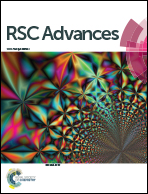Ultra-strong gel-spun ultra-high molecular weight polyethylene fibers filled with chitin nanocrystals
Abstract
Ultra-high molecular weight polyethylene (UHMWPE)/chitin nanocrystals (CNC) and UHMWPE/acetylated chitin nanocrystals (ACNC) fibers were prepared. The addition of CNC and ACNC significantly enhanced the ultimate tensile strength and Young's modulus of the UHMWPE fibers matrix. Compared with that of pure UHMWPE fibers, the ultimate tensile strength and Young's modulus of UHMWPE/CNC fibers are increased by about 14.5% and 17.0%, respectively, with the incorporation of 1.0 wt% CNC. Furthermore, with the addition of 1.0 wt% ACNC, the ultimate tensile strength and Young's modulus of UHMWPE/ACNC fibers are improved by 15.8% and 21.3%, respectively. To understand the mechanism of CNC and ACNC reinforcing UHMWPE fibers, the thermal, crystallinity, orientation and shish structure of pure UHMWPE fibers, UHMWPE/CNC fibers, and UHMWPE/ACNC fibers were determined by employing a differential scanning calorimeter (DSC), thermogravimetric analysis (TGA), scanning electron microscopy (SEM), wide-angle X-ray diffraction (WAXD), and small-angle X-ray scattering (SAXS) analyses.


 Please wait while we load your content...
Please wait while we load your content...